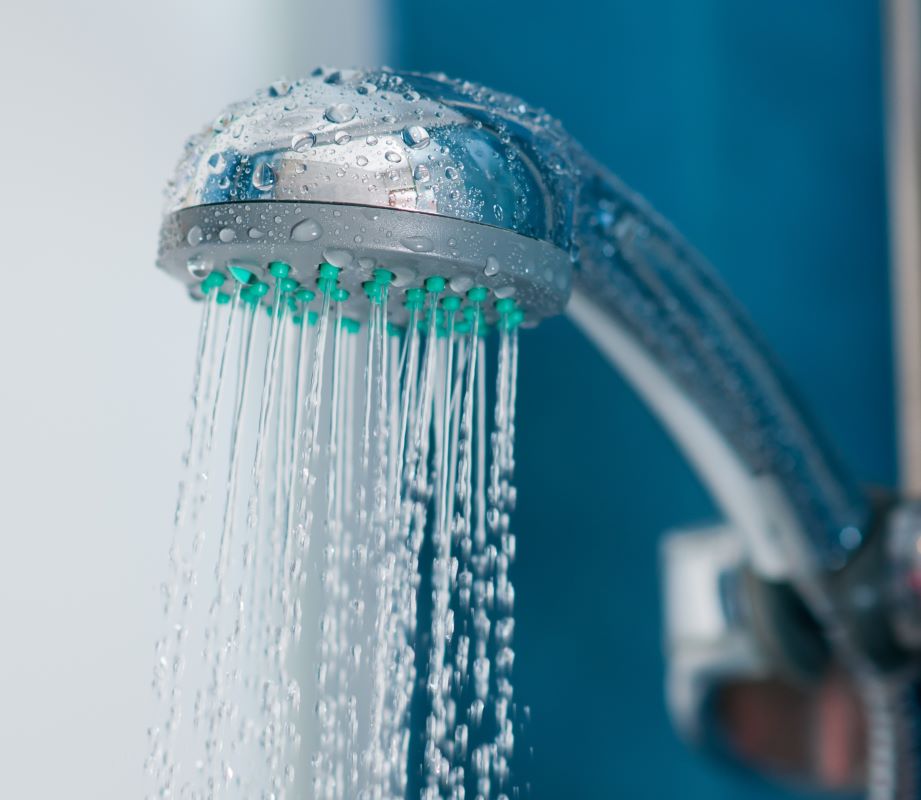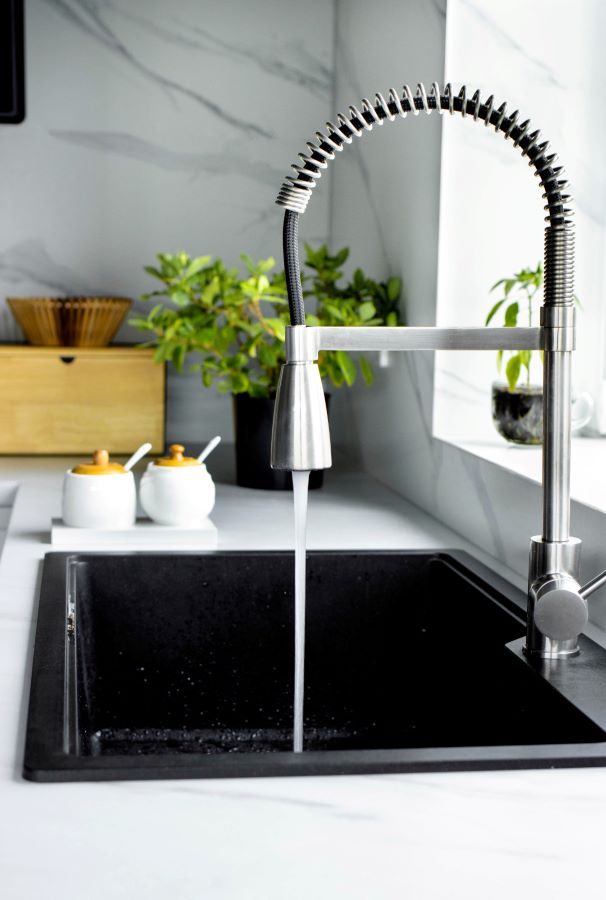Plumber in Sedona
Since 1994, Mountain High Plumbing has maintained its reputation as a prominent name in the Sedona area. Our roots as a family-owned plumbing business date back nearly three decades, when Jim Velez, Sr. and his wife, Alana, laid its foundation, later joined by their son, Jimmy. The distinctive skills of Jim Sr. and Jimmy combine to ensure that each and every customer receives top-notch service when they choose our local, family-owned plumbing company. At Mountain High Plumbing, customer satisfaction is a guarantee.
Our Sedona plumbing company has maintained a commitment to excellence from the very start, and this dedication has played a significant role in establishing our outstanding reputation. We stand out with our distinctive approach, combining decades of experience with exceptional workmanship and competitive pricing. Our team of bonded, insured, and licensed plumbers is renowned for their integrity and trustworthiness. Comprising only diligent, knowledgeable, and committed professionals, we are confident that you will find their service unparalleled. We're enthusiastic about showcasing why we're the top plumbing business in Northern Arizona, so please don't hesitate to get in touch with our Sedona plumbing service today!
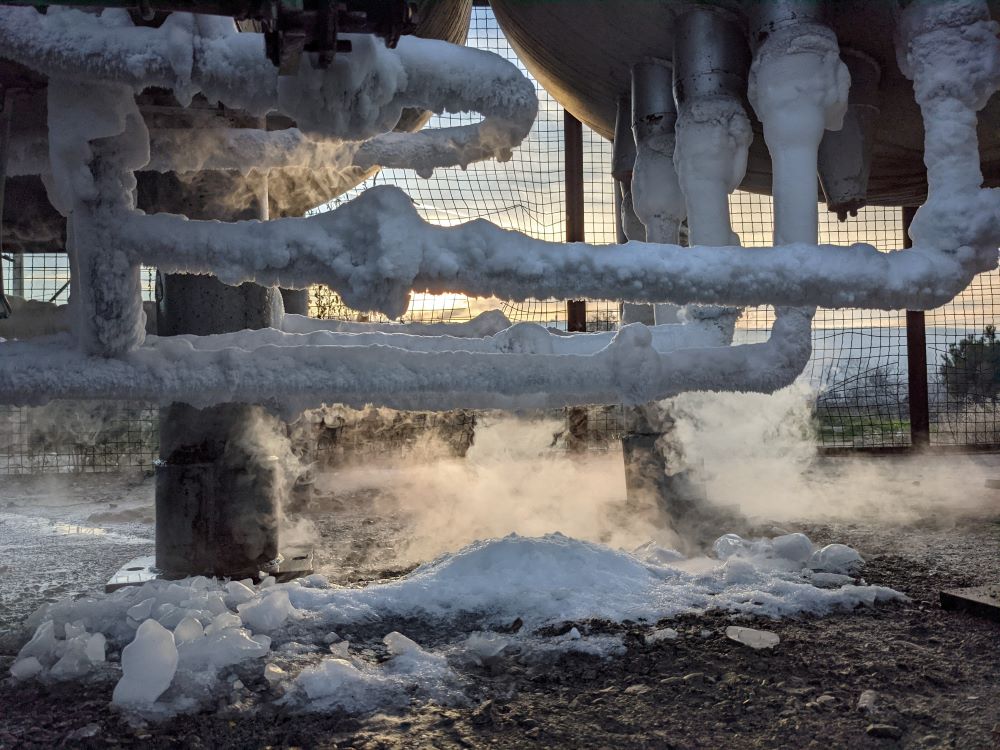
Dealing with Frozen Pipes
What proactive steps can prevent frozen pipes?
To minimize the risk of frozen pipes and the associated issues, our insured plumbers recommend several preventive measures. Keep the cabinet doors under your sinks open and maintain an indoor temperature of 55 degrees or higher to keep the pipes warm. Before freezing temperatures set in, shut off outdoor spigots and drain the lines. Regularly use your faucets and allow a small amount of cold water to flow from a distant faucet to maintain circulation. Consulting your plumber for advice on insulating your water tank and pipes is a wise move. By heeding these recommendations, you can ensure your plumbing remains in good condition during cold weather.When and where might my pipes freeze?
When pipes are subjected to low temperatures for long periods of time, they are most prone to bursting. In fact, they can burst when water has been frozen for as few as six hours. When temperatures drop under 20 degrees, the highest risk of bursting occurs - but they can begin freezing at any temperature under 32 degrees. They freeze most often in areas like crawl spaces, attics, or exterior walls.My pipes are frozen - what do I do?
In the event of frozen pipes, the top priority is to promptly shut off the main water valve. Following that, you can choose to either reach out to Mountain High Plumbing or attempt to thaw the pipes yourself. However, if your water meter becomes frozen, your sole recourse is to get in touch with your water company, as severe damage may occur otherwise. To circumvent a costly and intricate plumbing repair, it is vital to take a logical and proactive approach.How can I thaw my frozen pipes?
Before trying to thaw your own pipes, keep in mind that there are risks involved, including melting or cracks when pipes are overheated, water damage, and more. If you lack confidence in attempting this task on your own or suspect a pipe may have burst or cracked, we strongly recommend that you reach out to our 24/7 plumber immediately at (928) 774-3593. You can also try following the instructions below, but you should call your emergency plumber if the plumbing problem isn’t solved using these techniques. Mountain High Plumbing is fully prepared to offer our assistance during your time of need.- Discuss the situation with your neighbors. If they are experiencing similar issues, it might indicate a water main break rather than frozen pipes.
- Shut off the main water supply.
- Open all faucets in your home.
- Carefully use a blow dryer to warm the pipes, ensuring you avoid any flammable materials.
- Slowly turn the water supply back on and carefully assess the situation. Look for pooled water, as it could be a sign of a cracked or burst pipe, as well as any visible cracks or leaks.
How can pipes be insulated?
Since every property possesses its own distinct plumbing layout, your plumbing contractor will commence by identifying the most effective approach for pipe insulation. This often entails the selection of appropriate insulating materials, which might involve heat cables or heat tape, specifically for safeguarding pipes situated in crawl spaces, unheated attics, or exterior walls. When you decide to get in touch with our Sedona plumbing service and employ these techniques, your pipes will be thoroughly prepared to endure cold weather, thereby reducing the risk of freezing or bursting.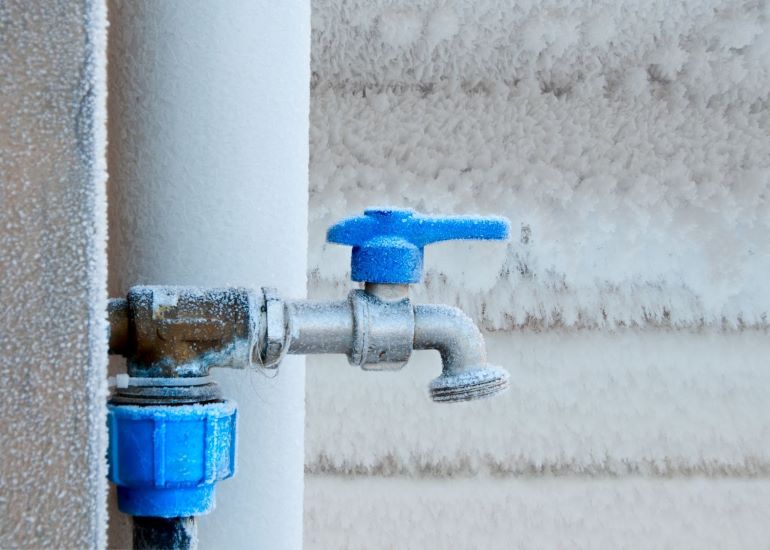

Dealing with Pipe Leaks
If any of these scenarios sound familiar, read on to explore the likely causes.I have an emergent, severe, and sudden pipe leak.
Not all plumbers are made equal, and the awful truth is that improperly placed pipes can cause serious problems for homeowners. A professional, such as those at Mountain High Plumbing, must precisely and meticulously install each pipe and connector. Call us at (928) 774-3593 for 24-hour emergency plumbing services so we can put an end to this unpleasant and damaging condition.I can see damage to my fixtures or pipes.
When physical impact occurs, a fixture crack can occur, which requires rapid repairs.My water has a bad smell, noticeable discoloration, or a bad taste.
Galvanized steel pipes last about 20 years, and brass pipes have an average lifespan of 70 years. As pipes and plumbing components age, they can deteriorate, corrode due to mineral buildup or pH imbalances, or start to rust. Left unchecked, you can also encounter leaks, pipe damage, and more - so it’s essential to call your go-to plumbing expert.My water drains slowly or I have noticeable water supply issues.
Calamities such as floods, earthquakes, and other natural disasters cause the ground to shift and move. Pipes may bend, detach, break, or twist as a result of this ground movement. When such events arise, thorough plumbing inspections and repairs will be essential.Water is pooling near my appliance(s).
If this issue is accompanied by condensation on the appliance, the most likely cause is deterioration or breakage of the rubber sealant around the appliance’s connections. If you also observe water leaking from the supply line, it's probable that the water connectors between your appliance and the water supply are damaged or loose due to wear and tear or shifting. These causes can be difficult to diagnose on your own, so contact Mountain High Plumbing for assistance.I hear a ticking or banging noise in my pipes, especially when I use hot water.
Pipe joint damage is commonly seen because pipe joints are made up of so many parts and are subjected to ongoing water flow. High water pressure, aging, and extreme temperatures can all cause this type of damage, which will necessitate joint replacement.I have a water leak accompanied by high water bills, damaged appliances, and/or a running toilet.
Pipes are engineered to withstand numerous challenges, but excessive water pressure can lead to leaks or even bursts. As part of our diagnostic testing, we will assess your household water pressure to identify and prevent potential issues.I have tree roots growing close to my home, an extreme drop in water pressure, and/or a sinkhole or wet areas in my yard.
Tree root systems are quite complicated and can easily interfere with household water lines. Plumbers must conduct thorough pipeline inspections and promptly address any invasive root growth as soon as it is detected.My drains are clogged, toilets are overflowing, or pipes have burst but aren’t frozen.
A variety of substances, such as debris from gutters, chemicals, hair, and an obstruction in the air handler drain pan, can lead to blockages in your plumbing lines. Severe clogs can cause significant, urgent plumbing problems.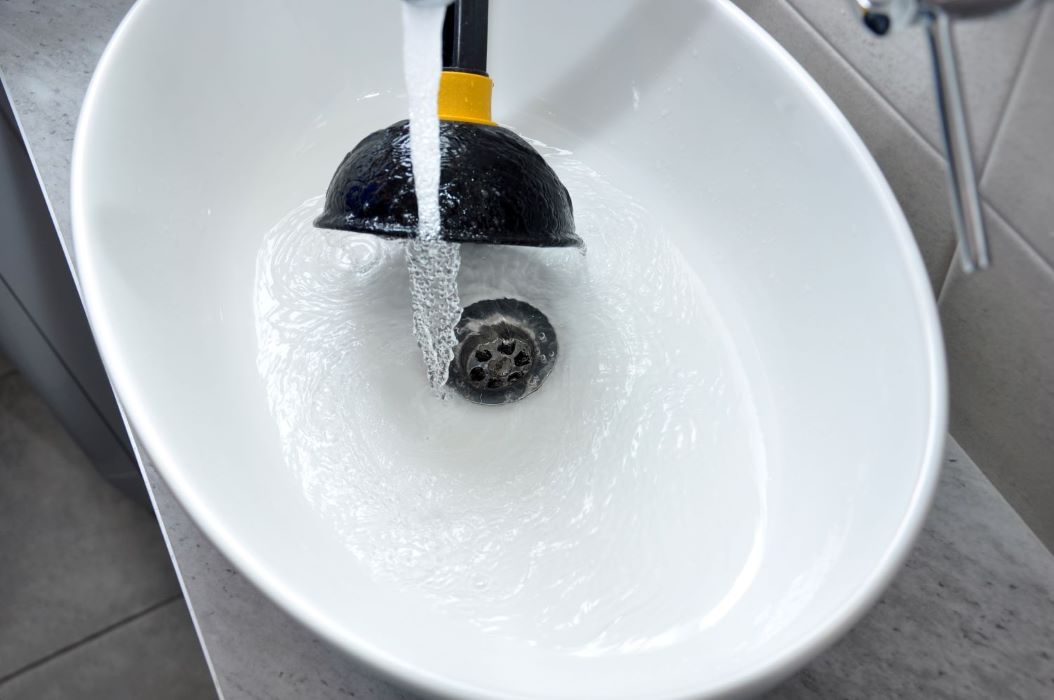
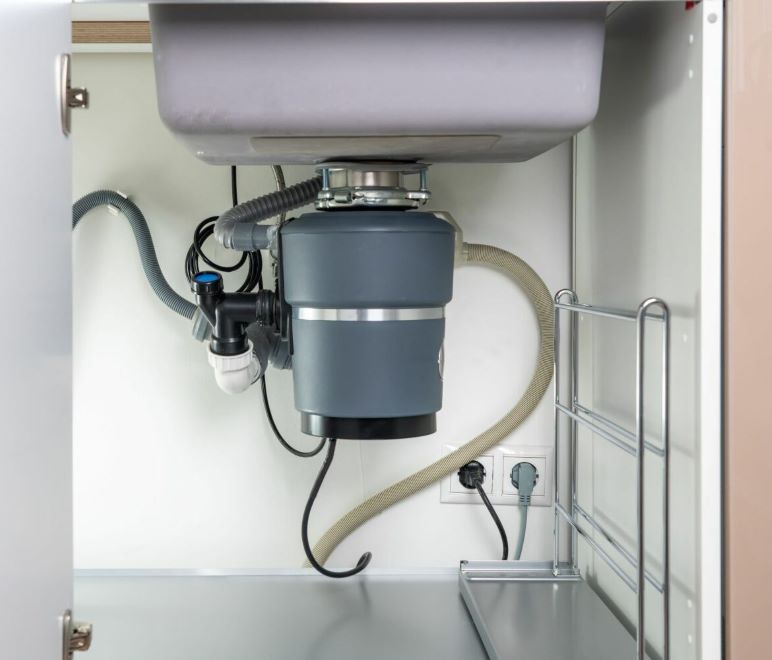
Garbage Disposal Installation
Here's how our expert plumbers put in garbage disposals.- Turn off the circuit breaker and handle electrical wiring with caution.
- Install the drain flange properly.
- Put the gasket and mounting ring in place.
- Support and secure the disposal.
- Secure the discharge pipe (P-trap) to the disposal outlet with pipe connections.
- Check for leaks by running the disposal and faucet and tightening any bolts at the mounting and piping connection points.
Dealing with Bathroom Sink Problems
Several common sink-related problems can be easily identified, and many of the following statements may pertain to homeowners facing these issues.
I have a leaky faucet.
A damaged washer, faulty valve seat, corrosion, general wear, or a faulty o-ring are the most frequent reasons for this problem. Our pros will get to the root of the problem and get any repairs completed quickly.
My drain stopper isn't functioning properly.
Stoppers are necessary because they allow your drain to open and close properly. If the stopper is cracked or has a loose nut, it will not work properly and will need to be replaced.
My sink is smelly.
If you detect an odor reminiscent of rotten eggs, it's probably due to a microbial infection in your drain or the sink overflow channel. These infections can typically be resolved by using hydrogen peroxide (3%). If the smell persists, don't hesitate to contact us for assistance.
My sink caulking is coming off.
Caulking around sinks can mold, mildew, peel, or crack due to continuous exposure to water. To maintain an effective seal, we advise re-caulking every five years.
My drain is slow or clogged.
Start by inspecting your drain stopper for any accumulation around the horizontal pivot rod beneath the drain opening. If the stopper checks out, you likely have a clog caused by hair or soap scum. For a professional diagnosis and the necessary repairs, don’t hesitate to get in touch with Mountain High Plumbing.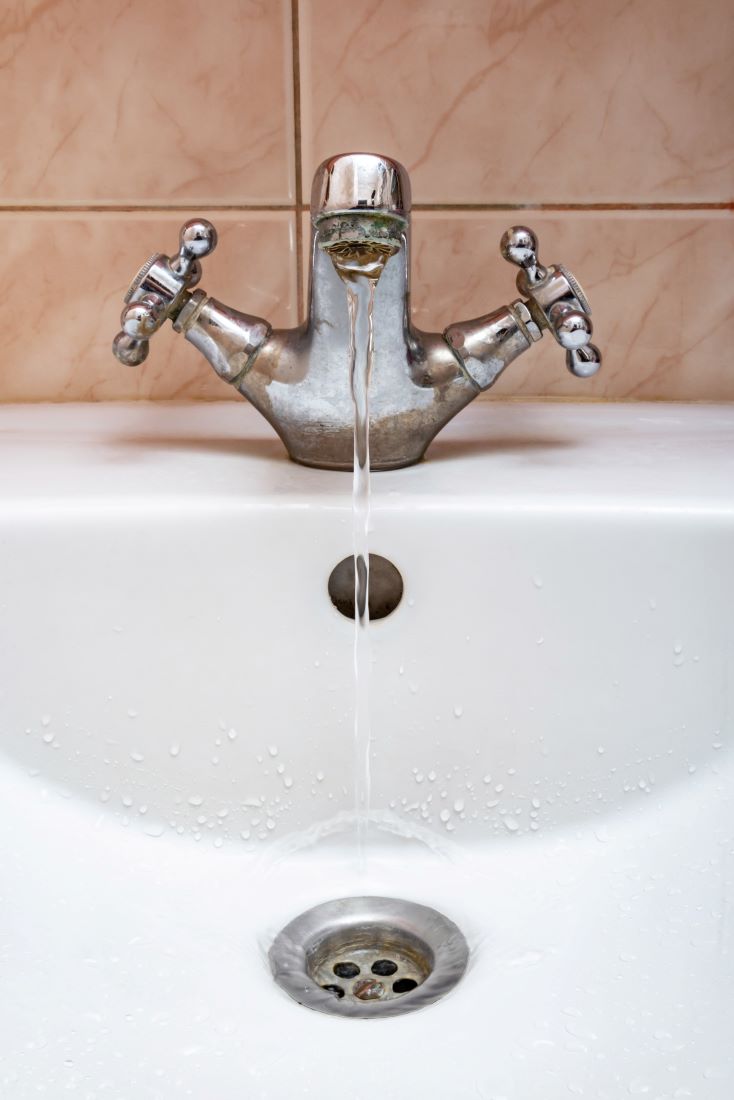
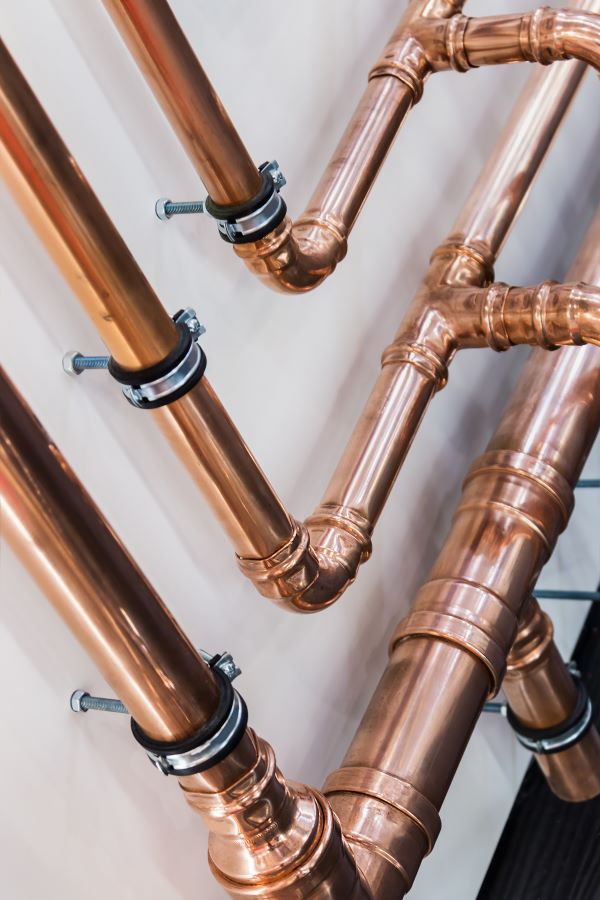
All About Gas Piping
Gas piping systems use pressure to carry natural gas to a location. Natural gas moves through a network of pipelines from high-pressure areas to low-pressure areas. It goes through a pressure regulator, then into your distribution system, and finally into your home. The voyage begins at mainlines and continues through service lines, which are owned by gas utility companies. Everything downstream that is on your land is your responsibility. When a gas stove or furnace is turned on, the gas pressure slightly surpasses the air pressure, allowing the heating unit to ignite. The most common gas piping materials are:Copper
Certain municipalities have prohibited the use of copper pipes entirely due to their limited average lifespan of around two decades and stringent code regulations that restrict their usage in many locations.Galvanized Steel
Galvanized Steel pipes have become less prevalent in contemporary construction, mainly found in older buildings due to their extensive labor requirements. They remain a robust and energy-efficient option for piping, and are often utilized for water supply as well as both exterior and interior gas lines.PVC
Many plumbers prefer PVC gas pipes because they are inexpensive, but certain areas disallow their usage because they can break during installation. Because of their corrosion resistance and outstanding endurance, they are a cost-effective solution for underground outside lines.Flexible Corrugated Stainless Steel Tubing
Flexible corrugated stainless steel tubing is easy to install, but is more susceptible to cracking, which makes it most suitable for indoor gas piping applications. These flexible tubes are useful in restricted spaces or disaster-prone places.HDPE
While natural subsurface objects like pebbles or tree roots can frequently harm this material, the plastic lines remain flexible and cost-effective. Much like PVC, HDPE has proven to be a reliable choice for buried outdoor pipeline applications.Black Iron
This material is the top choice for both outdoor and indoor gas piping. It's renowned for its durability, strength, and heat resistance, ensuring an airtight seal. However, over time, black iron is susceptible to corrosion, and the sealant applied to it tends to degrade. If your gas system uses this material, regular maintenance is highly advised.Dealing with Toilet Problems
Our local plumbers in Sedona are happy to provide their expert advice on managing some common toilet problems.
Water is leaking at the point where the toilet tank and bowl meet.
If you notice this problem, your plumber will need to drain the tank, remove it, and replace a gasket.
I need a new toilet installed.
Our skilled plumbers are well-versed in toilet installations. To kick things off, we'll take out your old toilet. After inspecting the flange and setting up a new wax ring, we'll put the new toilet in place, secure it with bolts, and attach the seat, tank, and lid. If your toilet comes with other features, like bidets or electrical components, we'll ensure they're properly installed too. We won't wrap things up until we've run leak tests and confirmed everything is in perfect order. Whether you're eyeing a gravity-fed, dual-flush, double-cyclone, two-piece, wall-hanging, pressure-assisted, comfort-height, waterless, or one piece toilet, you can trust our expertise for the installation.
My toilet won't stop running.
It's possible that you're dealing with a flush valve leak at the base of the toilet tank. A malfunctioning fill valve or fill valve misalignment could also be to blame.
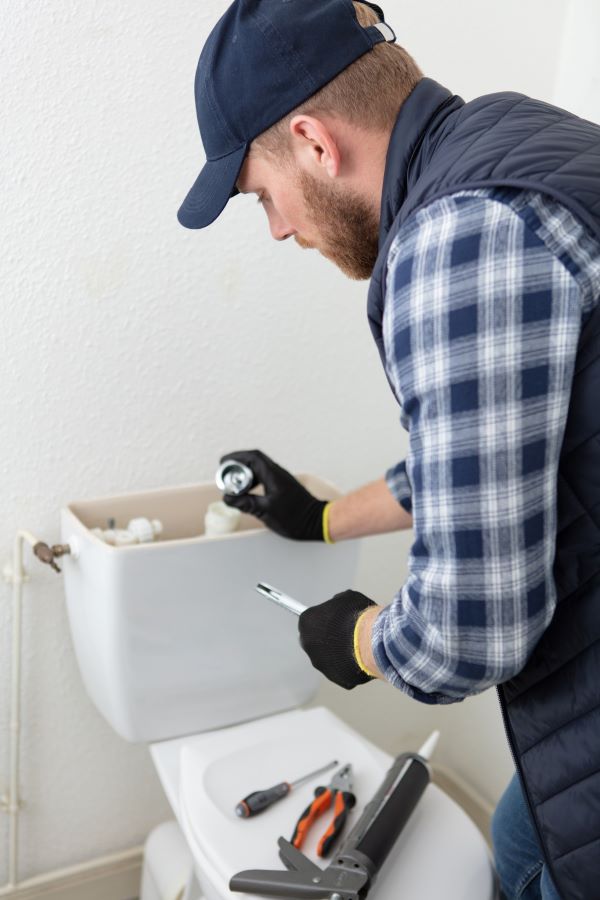
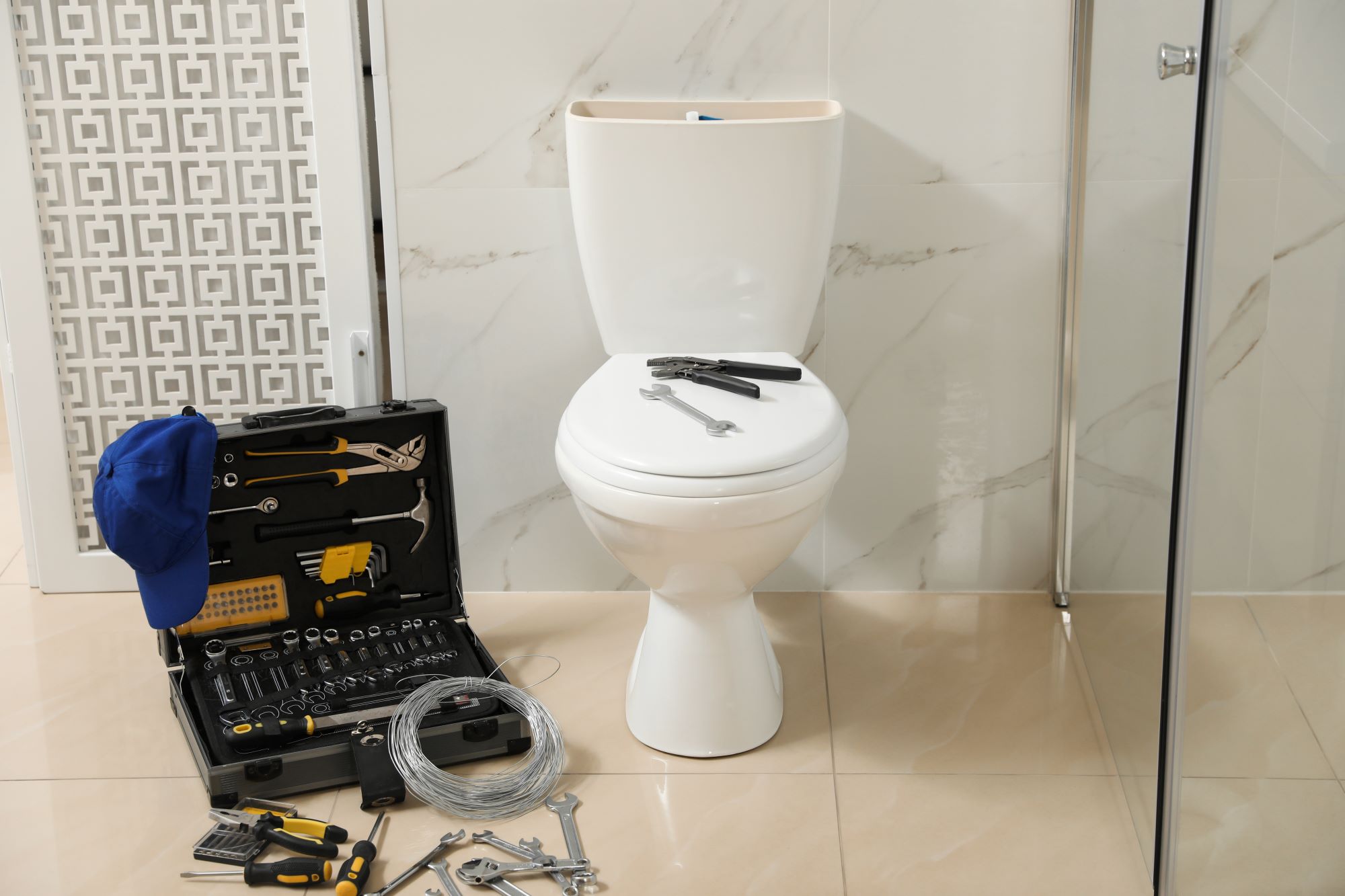
My toilet is overflowing.
If you are experiencing this issue, you should contact Mountain High Plumbing immediately for plumbing services. Turn off any valves that link the toilet pipe to the tank. If not, please turn off your water supply until we arrive. This problem suggests a serious pipe clog, a blocked plumbing vent, a full septic tank, or a sewage problem.
I have a water supply leak.
A persistent uptick in water bills, noisy pipes, the presence of pooled water, or diminished water flow are telltale signs of this issue. Once you've shut off your water supply, don't hesitate to get in touch with our plumbing service for help in averting substantial and far-reaching problems.
There is a leak around the base of my toilet.
If you notice water collecting around the base of your toilet throughout the day or immediately after flushing, it's likely due to an issue with your wax ring. Whether it's installed incorrectly, worn out, or defective, the solution involves draining the toilet tank, removing the entire toilet, and replacing the wax ring. In more severe cases of leakage, you might need to install a new tank and toilet.
My toilet is clogged or flushes slowly.
The first step is to attempt to clear the clog with a plunger. If a plunger doesn't work, you may have a difficult clog that necessitates the use of a plumbing snake by a plumber. As a toilet ages and collects debris, calcium, rust, or lime buildup, it may become more ineffective at flushing. This type of issue is fixed by having your Sedona plumbing contractor install a new toilet.
The Power of Hydro Jetting
Hydro jetting is an innovative method that involves completely cleaning a plumbing system using a high-pressure, one-of-a-kind water hose. The process initiates with an initial inspection that employs advanced camera technology to identify any existing pipe damage that might impede our ability to use hydro jetting on your system. Once we've established that your system is damage-free, the hydro jetting service begins. This entails expertly positioning the high-pressure hose and linking it to a top-quality water tank. We must also determine the perfect insertion point, which is a crucial step in itself.
We embark on the task armed with gravity's force, our sturdy hose, and a powerful surge of water. This effective and coordinated combination propels water through your plumbing at a rapid rate, pushing approximately 20 gallons per minute. Debris is dislodged with the help of a forward-facing jet, while rear-facing jets and the forceful water surge drive the nozzle through the pipes. Hydro jetting is not only an excellent solution for tackling clogs, but it also excels at eliminating mineral buildup, tree roots, grease, and any other debris that could lead to future issues. When confronted with a particularly resilient clog, your preferred plumber is likely to recommend this method for the best possible outcome.
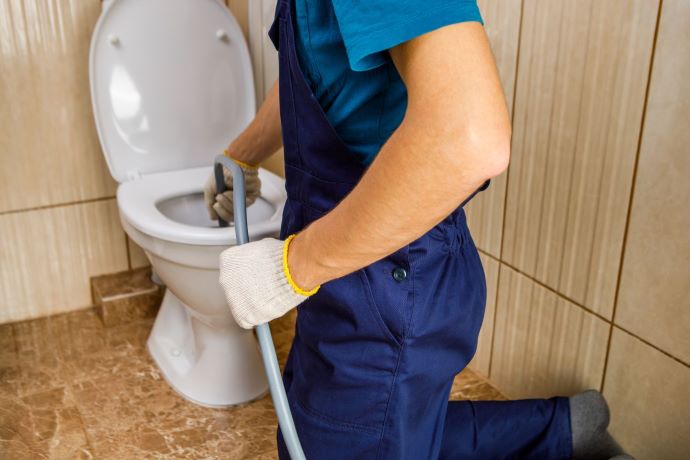
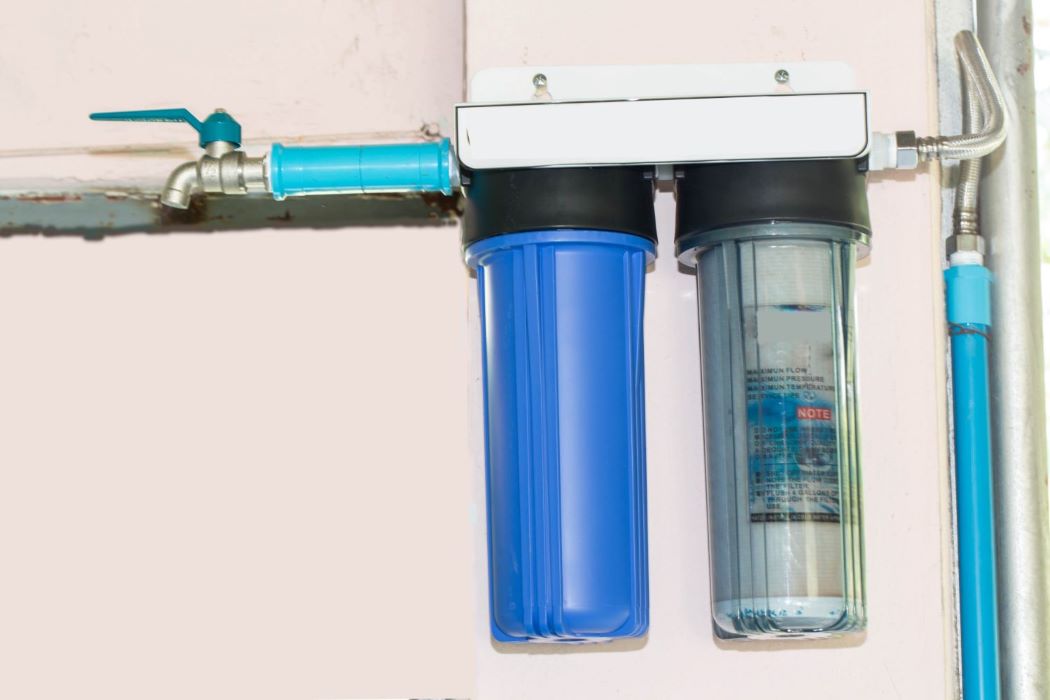
All About Whole Home Water Filtration
Municipal water undergoes a series of treatment processes, which include pre-filtration, copper-zinc KDF, and activated carbon treatment, to guarantee its safety. Installing home water filters is crucial for eliminating a range of contaminants like hard minerals, heavy metals, and chemicals. Filtered water not only promotes better health, but also extends the lifespan of your plumbing, faucets, and appliances.
Opting for a whole-house water filtration system is a wise choice with a range of benefits. It guarantees access to safe, great-tasting drinking water, eliminating worries about contaminants and saving money on bottled water while reducing plastic waste. Additionally, the filtration system prevents limescale and mineral buildup, reducing potential plumbing issues and costly repairs. Say goodbye to skin irritants, reduce soap usage, and enjoy cleaner, softer clothes. Overall, investing in whole-house water filtration enhances your quality of life and environmental consciousness while remaining budget-friendly.
The Top 5 Most-Used Plumbing Pipe Materials
PEX Pipes
This piping is available in three colors, each of which serves a specific purpose: blue for cold water, red for hot water, and white for water of any temperature. Our highly skilled local plumbers use PEX piping because it is exceptionally robust, easy to bend, and versatile, allowing it to serve a variety of functions. It is also a remarkably rigid, inexpensive, and expandable material.CPVC (Chlorinated Polyvinyl Chloride) Pipes
CPVC pipes do have their limitations. They fall short in tolerating high temperatures, making them less ideal for regions with temperature fluctuations. Their brittleness adds to their disadvantages, and they cost roughly twice as much as normal PVC equivalents. Despite these disadvantages, this durable and strong polymer is non-corrosive and quick to install, surpassing copper piping in these aspects.Copper Pipes
Copper pipes, recognized for their chemical resistance, incredible longevity, and ease of cutting, are frequently used in household fixtures like tubs, sinks, and showers - albeit at a higher price compared to other options. They are also commonly utilized for household water lines.PVC Pipes
PVC piping is a common choice over galvanized steel pipes due to its durability and cost-effectiveness. It's widely employed for waste lines and is a popular material option, though it is not a suitable option for high-pressure water systems.Cast Iron Pipes
This piping material is considered outdated because it has a number of drawbacks - the heavy material easily corrodes, causes many problems that can be expensive for homeowners, deteriorates gradually, and inevitably leads to sewer backups. It was once a prevalent choice due to its durability, damage resistance, and convenience, which is why our plumbers near you often encounter it in sewage drain lines of homes constructed in the 1970s and 1980s.
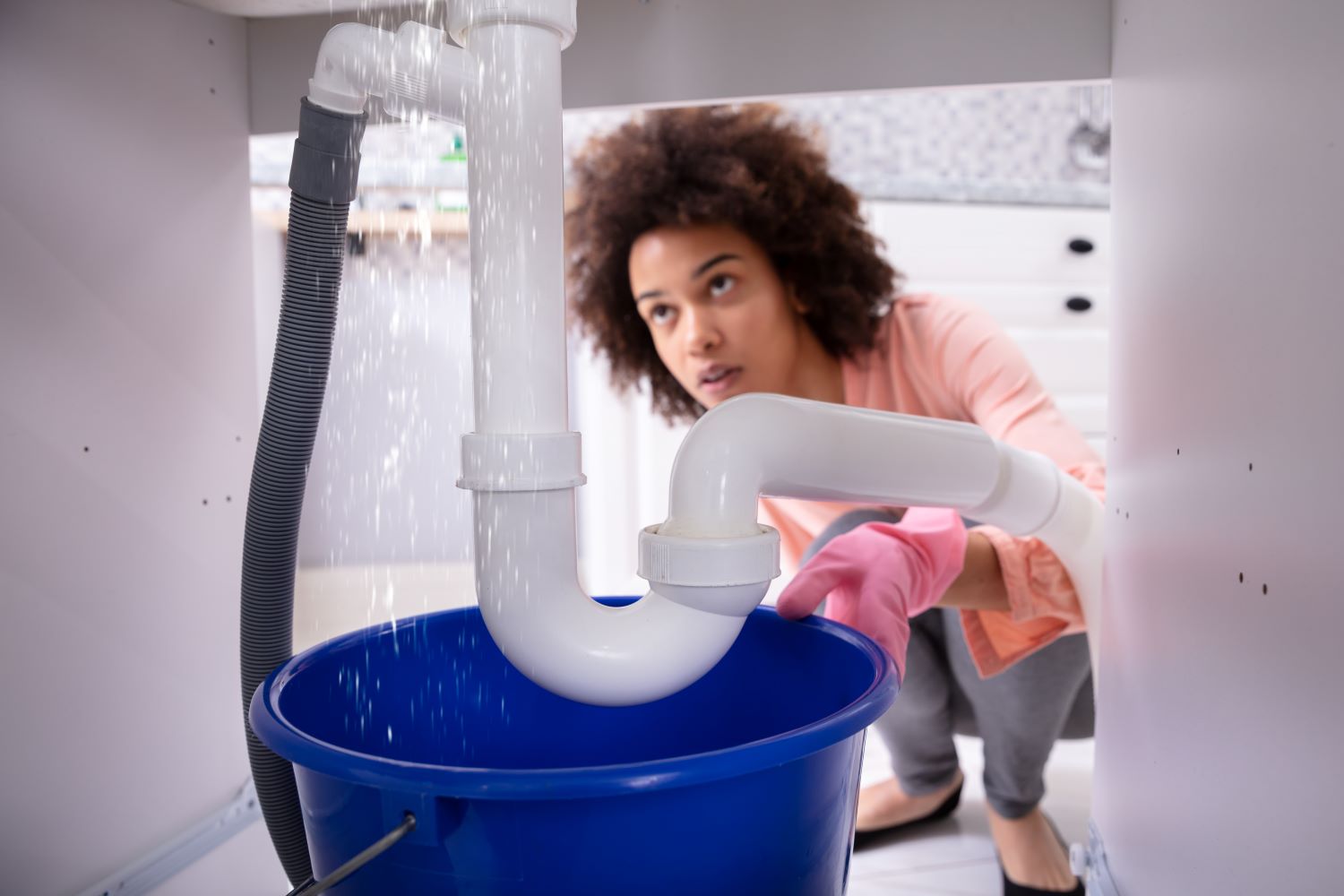
Dealing with Kitchen Problems
If you can relate to any of these scenarios, let's explore the possible causes behind them.My kitchen faucet is leaking.
To control cold and hot water flow, most kitchen faucets use a single-valve cartridge. If your faucet is dripping, this cartridge might need to be replaced.My sink is draining slowly.
Your experienced plumber may need to snake an obstruction after opening your drain trap. because kitchen drains are often blocked by food debris, foreign objects, grease, or soap scum.There is a leak in the cabinet under my kitchen sink.
This type of leak is typically caused by issues with the drain pipe joint. Sometimes, water supply connections can also fail and lead to leaks. Human error, such as not properly securing hand-tightened fittings at connection points between faucets and water supply pipes, can be a root cause. Alternatively, if your caulking or seals are damaged or worn, splashed water may be leaking into the cabinet below. Our team can assist you in diagnosing and resolving these common issues.Dealing with Shower Problems
If any of these scenarios sound familiar, read on to uncover the likely root causes.My shower drain is clogged.
Shower drains often get obstructed due to hair accumulation, foreign objects, soap scum, or potentially deeper problems like damaged pipes. Our plumbing experts strongly discourage the use of drain cleaning chemicals, as they can exacerbate the situation. Instead, try clearing the obstruction with a plastic drain cleaning tool. If your personal efforts fail, we can assist with our expert tools.My shower drain is stinky.
Seldom-used bathrooms can develop odors as gas escapes from the dry shower drain P-trap. In frequently-used bathrooms, the issue might involve sewer gas, bacteria, or mold. We're here to help you address this unpleasant situation with speed and ease.My shower head is dripping.
The accumulation of minerals like magnesium, calcium lime, and silica due to hard water can impact your shower head. Typically, this buildup manifests as noticeable white lines. To address this problem, you can try soaking the shower head in vinegar. However, it's essential to note that shower head issues can also be attributed to faulty gaskets. If you require assistance with gasket replacement or any other shower head-related tasks, we are here for you.